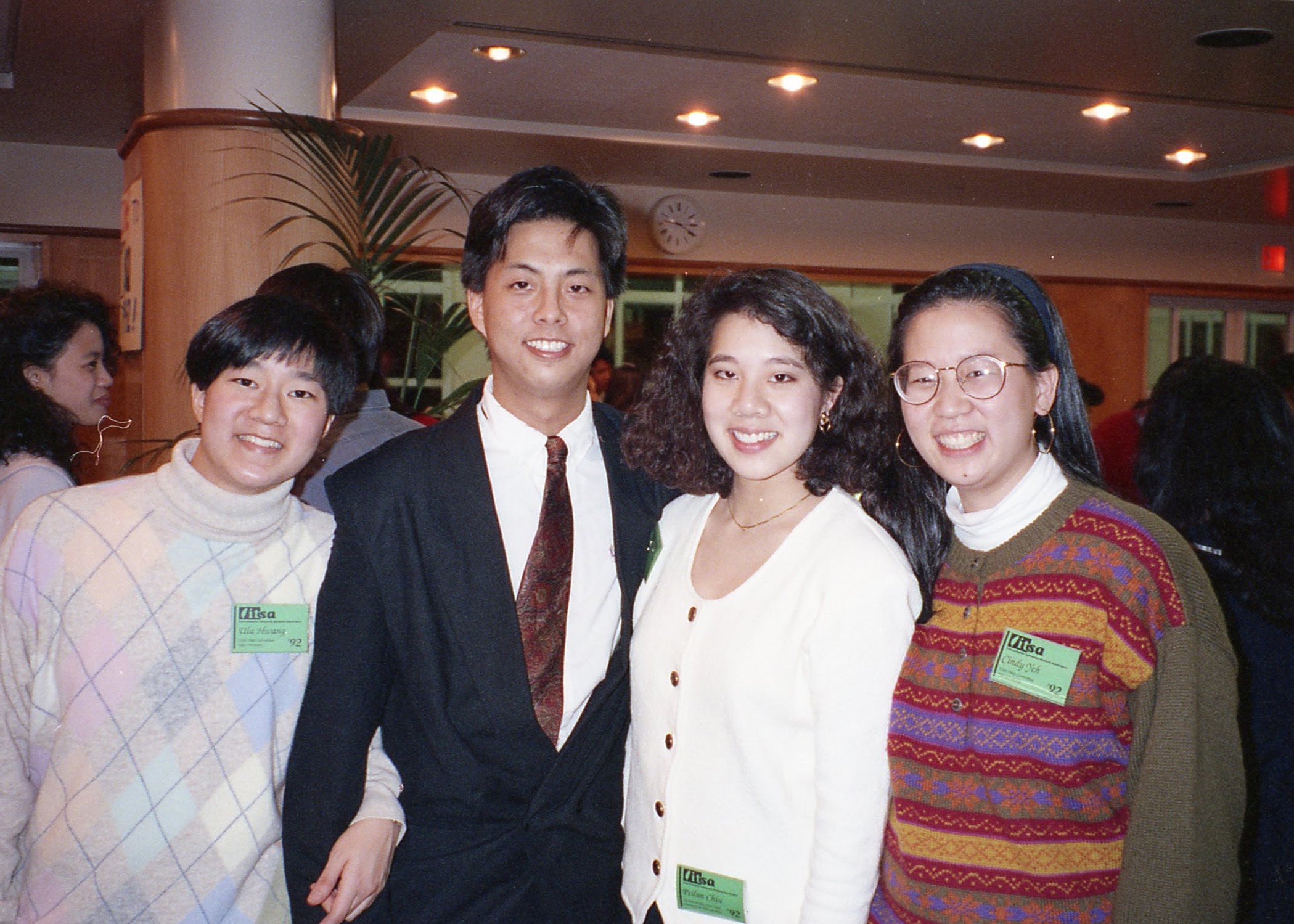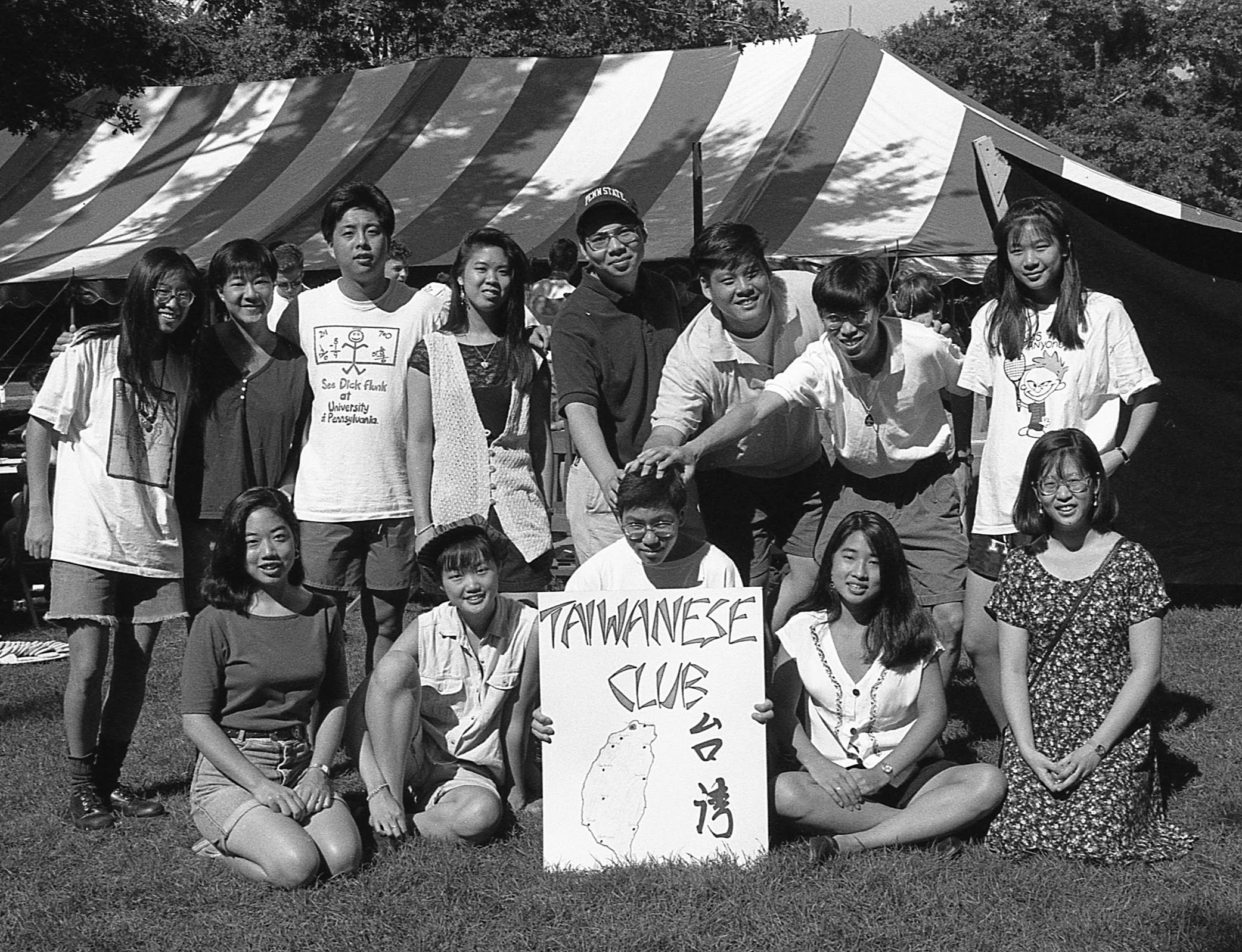Originally published in the Taiwan Tribune in 1994
Mission Statement:
The Intercollegiate Taiwanese American Students Association is a network of college students who come together based on a common Taiwanese heritage to provide a support group, to facilitate the defining of an individual’s Taiwanese American identity, and to actively afford an opportunity to address issues and concerns of Taiwan and Taiwanese Americans.
The 2nd Generation Taiwanese American Youth Movement: The Formation of ITASA
by
Tim Chuang (now Tim Chng) – Chicago, IL
Ula Hwang – New York, NY
Cindy Yeh – Washington D.C.
A vision is created
Once upon a time, during the 1990 Taiwanese American conference / East Coast summer conference (TAC/EC) at Cornell University, a number of concerned collegiate Taiwanese Americans gathered in the lounges of Mary Donlon Hall to discuss the future of their community into the night. They discussed many questions about Taiwan, the role of Taiwan in their lives, and what exactly it meant to be Taiwanese American. The questioning led to talk on their future role in organizations such as the Taiwanese Association of America (TAA) and what would become of the Taiwanese American community as they became adults. After much debate, a vision for the immediate future was created — a vision of a network of Taiwanese American collegiate students. The individuals present at this meeting were thought of as “seeds”, seeds that would return to their respective campuses to grow and spread the knowledge about their identity and their Taiwanese heritage. By maintaining the friendships made at the various Taiwanese American conferences, these individuals hoped to take a more assertive role toward their identity.
Meanwhile in the midwestern region, the Taiwanese American foundation (TAF) 1990 Summer Camp also addressed the conspicuous void of an organized youth movement by introducing a college program. This program, organized by Bob Lin (Dallas, Texas) also provided an impetus for Taiwanese American college students to take action on their campuses.
Separate collegiate efforts
Throughout the 1990-1991 school year, many Taiwanese Americans clubs were founded all over the Midwest and the East Coast. Efforts at communication among these new Taiwanese American student groups laid the foundations of a larger Taiwanese American student network. The Midwest region was led by members of the Purdue Taiwanese Students Association (PTSA), directed by Tim Chuang/Chng (Purdue University), and the Taiwanese American Students Club (TASC) at the University of Illinois, founded by Rolla Chuang/Chng (University of Illinois). These two clubs worked together to sponsor one of the first intercollegiate activities in inviting Columbus Leo (Leo Yeh-Seh) to speak about his experience as a political prisoner in Taiwan.
Meanwhile, on the East Coast, Winston Yang (Columbia University), Peilan Chiu (University of Pennsylvania), and Ula Hwang/Cindy Yeh (Yale University) brought members of their respective Taiwanese American clubs as well as other students to the Columbia campus in hopes of also motivating Taiwanese Americans to action. Students from Amherst, Barnard, Smith, U Penn, and Yale attended this gathering.
One of the few bridges between the Midwest and the East Coast was a newsletter entitled “Ilha Formosa”, which was established that year by Tim Chuang/Chng. With a circulation of approximately 1000 individuals across America, the newsletter had a clear focus on Taiwanese Americans, and it hoped to communicate concerns that they all had to face as people of color living in the United States.
Tying it together: summer networking
Again, the summer conferences of 1991 came, and again, strides toward solidifying a Taiwanese American student network were made. Tim Chuang/Chng acted as a link between the summer conferences, traveling to 6 conferences in all as a part of a new internship at the Asia Resource Center. The purpose of this internship, which was funded by the Taiwan Foundation and other generous individuals, was to promote the idea of networking among Taiwanese Americans. At these conferences, Tim either held workshops or helped organize the youth programs.
Meanwhile, at the 1991 TAC/EC conference, Ula Hwang (Yale University) proposed that an intercollegiate students conference be organized : This gathering would be structured much like TAC/EC conferences and be comprised of workshops, lectures, and social activities. Commitments were made by the Taiwanese students clubs at the University of Pennsylvania and Yale University to cohost the first East Coast conference to be held in Philadelphia. The confidence to overcome the anxieties over this groundbreaking conference was provided by the guaranteed support of TAC/EC, The Chen Wen Chen Memorial Fund, and many private donors. The organizers at U. Penn and Yale University decided to call their conference ITSA (the Intercollegiate Taiwanese Students Association).
The first intercollegiate conferences: ITSA and TAScon
In January, 1992, over 200 Taiwanese American collegians from across the Midwest and the East Coast attended the first conference which outreached to the Taiwanese American collegiate community. Under the direction of Peilan Chiu and Morris Tsai, the conference’s theme was “Who are you?”, and it focused on understanding the essence of the Taiwanese American identity. Speakers discussed a series of topics regarding Taiwan’s political future.

Ula Hwang, Morris Tsai, Peilan Chiu, Cindy Yeh
Then in March, 1992, Rolla Chuang/Chng, aided by Felicia Lin and others at the University of Illinois, convened another conference called Taiwanese American Students Conference (TAScon) at the University of Illinois. Representatives from Purdue, Michigan’s newly started Taiwanese American Students for Awareness (TASA), and several other schools attended.
Improving on the foundations : ITASA’s new look
At the conclusion of the 1991-1992 school year, students from various Midwest and East Coast colleges met at the University of Pennsylvania for a meeting about the future of these Taiwanese American collegiate conferences. At this meeting, the participants decided to rename the organization the Intercollegiate Taiwanese American Students Association (ITASA). This new name more accurately reflects the nature of the organization as not only being Taiwanese, but also American.
During the summer of 1992, Stephen Chen (Emory University) took over Tim Chuang/Chng’s summer internship. Stephen’s activism helped spread the word about ITASA to the various conferences, this time also including the South Eastern Taiwanese American community. Together, Tim and Stephen worked at these summer conferences in hopes of carrying on the vision.
At TAC/EC 1992 at the University of Massachusetts, more steps were taken toward formalizing ITASA’s structure. Officers were chosen for ITASA, and/it was decided that the newsletter “Ilha Formosa” would be discontinued in favor of starting a joint newsletter called the “ITASA Tribune”
1992-3 : the wellspring of ITASA activity
The 1992-3 school year witnessed a burst of enthusiasm and commitment by Taiwanese American students in several regions of North America. In the fall of 1992. Students at the University of Illinois and Brown University each sponsored a Taiwanese Cultural conferences at their respective schools. Felicia Lin led the efforts at the University of Illinois, and Sabrina Su spearheaded the conference organizing at Brown University. Both conferences achieved their objective of presenting the cultural aspects of Taiwan, through the use of lectures, hands-on workshops, and performances. These conferences further helped to publicize ITASA’s existence to students.
In January of 1993, Yale University presented the Second ITASA/East Coast conference which attracted over 350 students from schools across the Midwest, East Coast, the South, and even Canada. The main organizers of this conference were Janice Cheng, Ula Hwang, Judy Lin, and Cindy Yeh. In addition to the numerous lectures and workshops, the highlight of the conference was a panel discussion concerning Independence or Unification of Taiwan with Mainland.
Also that spring, the ITASA/Midwest conference was held at Purdue University. Tim Chuang/Chng and Lynn Lue led the efforts there and presented a conference featuring Ramsey Clark (former attorney general under President Lyndon B. Johnson) as the keynote speaker.
The ITASA activism sparked our Canadian neighbors, under the leadership of Euger Lin and Patrick Leu, into holding the ITASA/Canada conference at the University of Western Ontario. This conference represented one of the first organized displays of activism toward their Taiwanese identity by Taiwanese Canadian students.
The most recent activity which ITASA has sponsored was a cultural conference at the University of Michigan. Held in October, 1993, this conference was a rousing success highlighted by a Taiwan Night Celebration. The Taiwan Night performances as well as the other events clearly focused on the Taiwanese American experience with a look to the future.

Back – Rolla Chng, Ula Hwang, Morris Tsai, Felicia Lin, Alvin Wang, Stephen Chen, Tim Chng, Joyce Chen Hsueh Front – Janice Cheng Lim, Sabrina Su, Neill Tseng, Erica Cheng Lee, Cindy Yeh
Throughout it all, the key tool in maintaining communication in the ITASA network was Electronic mail. Taiwanese Americans transmitted messages and articles, and the core organizers held weekly conference meetings over Internet Relay Chat (IRC). (For those who are interested in learning more about ITASA over e-mail, please send mail to putaiwan@sage.cc.purdue.edu).
Conclusion
The dreams created in the summer of 1990 have become a reality with the formation of ITASA. As more and more Taiwanese Americans become drawn into ITASA, the strength of this student network grows, and the prospects of an active future remain bright.
While ITASA has found strong roots primarily on the East Coast and in the Midwest, it is hoped that ITASA will expand into other regions of the country. With time, effort, and the continued support of the Taiwanese American community in the United States, ITASA will only continue to flourish and grow.






